Learning Away From School
Can learning continue when school is closed or when students are at home? Of course! Here are ideas for keeping your child academically engaged at home. (Not every idea will work in every situation; be sure to follow health and safety guidelines.) Additionally, your child’s school or teacher may have provided activity ideas or books and suggested meaningful ways to engage in learning at home, so be sure to use those ideas.
For All Students and Families
Spend time with friends, neighbors and family: play a game, cook a new recipe or declutter your room together.
Remember wellness activities (social-emotional and physical): practice deep breathing, have a dance party, go for a walk, ride a bike, skateboard or stargaze.
Explore other activities: draw, play an instrument or practice a new language you are learning.
If you have a device available, then CCPS learning applications are only a click away. Students might enjoy exploring Lexia Core 5 or DreamBox for elementary reading and math; reading a new book or article on myOn (elementary) or Actively Learn (secondary); or practicing math skills on ALEKS (secondary). Many other applications are specific to certain courses.
Elementary Students and Families
Read, read, read! Whether your child is an independent reader or enjoys being read to by an adult, time with books is always beneficial.
Writing is a vital part of learning, so encourage your child to write. This can be in the form of journal writing or something as intentional as writing a thank you note. For younger children, drawing or squiggle writing can be an alternative to conventional writing — a picture with even a few words on what they drew about is the start to more advanced writing. Wondering what to write about? Journal entry ideas are endless, but here are a few to consider:
What I did today
How I am feeling
A favorite person of mine is
What I am thankful for
What I want to be when I grow up is
My favorite food / place / music is ____ and this is why ____.
Do some math in everyday activities. Talking about the time, date and month connects with math standards. Cooking a meal or baking a dessert has lots of math too: measurement, fractions, doubling and more. Math is everywhere!
If you have cards with letters or numbers, then have young children identify and place in order their letters and numbers.
To boost math problem-solving skills, practice addition/subtraction facts (grades 2-5) or multiplication/division facts (grades 4-5). Have students explain their thinking using pictures, numbers or words.
Play a game together! Many board games naturally engage students in logic plus mathematical thinking (counting, measurement and more).
Middle and High School Students and Families
Use the opportunity to work on incomplete assignments.
Study for upcoming quizzes or tests.
Prepare for any upcoming projects and work on current projects.
Read an article or book for at least 20 minutes. Reading ability is strengthened by simply reading more!
Listen to a podcast or watch a documentary on a topic of interest.
If you are involved in content recovery, work through some of the modules.
But Wait: There’s More!
These organizations (and many others) offer online resources for family learning at home:
